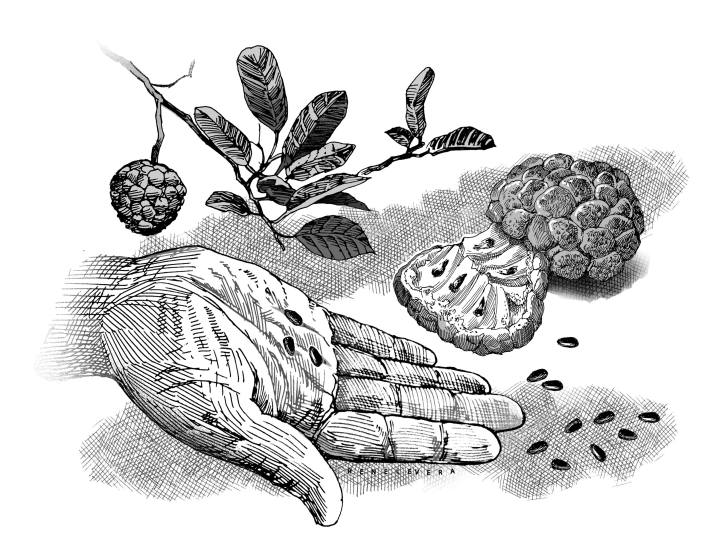
On a trip to a distant province to attend a court hearing, I struck up a conversation with the in-house counsel of a mining company. He told me, among other things, that he could go home only once a month, and that he spent his idle hours collecting the seeds of the Ipil-ipil tree which teemed at the mine site. I thought that he would use the seeds for an item of fashion jewelry – for sure, they had the strength and glossiness for it – but, no, he said, he intended to sow them during vacation, so that in due time his farm would have a dividing wall of sturdy Ipil-ipil trees – a prospect I found appealing, as my own little home lot as yet had remained unfenced, and at once I asked him to give me some pods for myself and began shelling them.
Within a year I had my own hedge of Ipil-ipil trees, so fast does Leucaena leucocephala grow.
At the time I had brought home a spacious bag of seeds and feel quite sure that I had stored the leftovers in some corner, now among the items the years had turned into junk. Which kept me wondering, because of a peculiar habit of mine while reading, to use anything within reach as a bookmark – flower, leaf, paper clip, grocery receipt, photograph, at one time a stray ant – if I might not have slipped a seed between the pages of a book.
Which book? Only time and its serendipities will tell. If I pick up a discarded history book, I might chance upon an Ipil-ipil seed kept inside it, perhaps at the beginning of the chapter on Ivan the Terrible, or a book of philosophy – areas of knowledge whose bloodless tomes I tend to leave in the lurch.
If by accident I open such a book, and find there a tiny seed, I could get engrossed, not in what the page offers, but in the seed itself, which has lived inside the book for such a long time that, if it could speak to me, it might say, “There is nothing outside of the text.”
Poor seed! I know what happened to its companions in the pod – they grew into trees, some of them, in just two or three years, reaching a majestic height.
This reminds me of what Jesus said, which John recounted in his Gospel, after Andrew and Philip told him about a group of Greeks who had come to the Passover and wanted to see him – “The hour has come for the Son of Man to be glorified. Amen, amen, I say to you, unless a grain of wheat falls to the ground and dies, it remains just a grain of wheat; but if it dies, it produces much fruit.
“Whoever loves his life loses it, and whoever hates his life in this world will preserve it for eternal life.”
Here Jesus addressed his disciples more than the Greeks, and declared the need for him to die to make salvation possible for others. On top of that, because of his death, his disciples would not remain alone but in community would be united with him and his Father.
I take this to mean likewise that if I stay in isolation, within the shell of myself, and refuse to go out and grow with the community as a man among others, a growth that requires patience in suffering, I will not produce much fruit.
Jesus used as image the grain of wheat falling. Close to home I have seen the fall of other seeds.
For instance, the seeds of the atis or sugar apple (annona squamosa), which a cousin planted at the back of the house, and have now become fully-grown trees, whose fruit, enclosing a cluster of hard, shiny seeds, periodically drops to the ground when overripe and forgotten.
Ever a sucker for sweetness and at the same time absent-minded, we realize only too late that, again, time has claimed another thing for its purposes, when in the middle of the night we hear a plop, and at sunrise, upon checking, see an atis fruit splashed on the ground spilling its seeds. Each seed has a journey, which, after the winter of growth, will end in the glorious summer of fruitfulness.